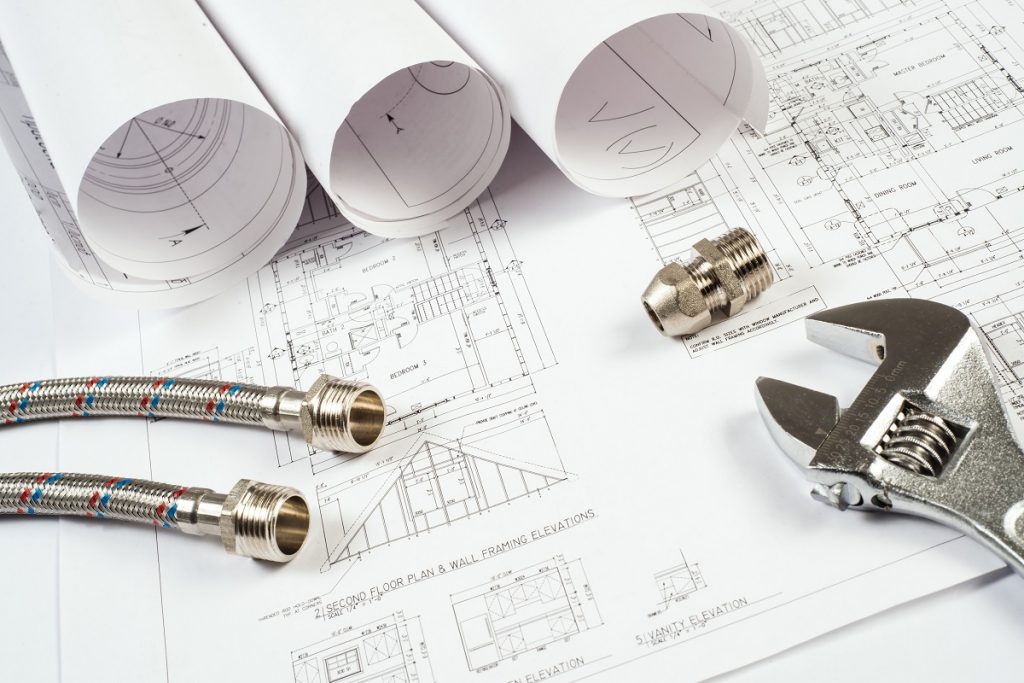What are the common plumbing mistakes when installing pipes?
- Conducting installations without permits
- Combining dissimilar materials
- Installing fixtures that are too tight
- Wrapping tapes in the wrong direction
- Keeping the water on during repairs
- Installing pipes at high slopes
- Performing DIY installations without a license
- Lacking the needed tools
- Using the wrong pipe material
While some piping issues are easy to fix with home remedies, installing them is a whole other topic. If you lack knowledge, you might be creating more problems than fixing them. Aside from looking for a steel pipe supplier in the Philippines, the right tools, spare parts, and experience are also vital. Here are the nine plumbing mistakes both DIY enthusiasts and professional plumbers need to avoid. Read on!
Conducting Installations Without Permits
The first thing you need to do before altering a building’s plumbing system is to secure a permit from your local government unit. If you don’t, you might have to pay fines and delay your construction project, which is a bad thing if you’re operating on a tight schedule.
Add to that the expenses that could have been prevented. Keep this in mind when you’re planning a big renovation.
Combining Dissimilar Materials
If you need to replace pipes for a home that is several decades old, there is a high chance that you won’t find the same material as the original. Other than that, connecting dissimilar pipes is also tempting if you want to save on costs. If you do this without enough chemistry knowledge, you can expect problems.
For example, if you connect a galvanized pipe to a copper pipe, corrosion will occur. If you want to do this, you need a piece called the dielectric union.
Installing Fixtures That Are Too Tight
Many beginners make the mistake of overtightening connections due to the fear of leakage. Doing this can put unnecessary stress on the pipe and fitting, which can lead to cracks—and later, leaks.
This problem may be unnoticeable at first but the problem will be discovered later after flooding happens. To prevent your new pipes from breaking, don’t force the bolts to go any further after it has stopped moving.
Wrapping Tapes in The Wrong Direction
Teflon tape, which is also called the Plumber’s tape, is often used as a watertight seal on threaded pipe ends. If used properly, it can be used for both metal and plastic pipes on water lines. Unfortunately, most DIY enthusiasts apply it in the wrong direction.
To properly wrap the plumbing tape, you can place it on the second thread from the end of a pipe. When rolling it, aim for the opposite direction the pipe should turn. Wrap it 4 to 6 times before cutting. After that, it’s ready for the fixture!
Keeping The Water On During Repairs
To quickly replace pipe fittings, it might be a common mistake of many DIY-ers not to turn off the water before repairs. When doing so, you can expect water to flood your building, damaging appliances—which is an expensive lesson on plumbing.
There are multiple locations where your water supply can be shut off. The valve underneath the fixture (such as the sink, shower, or toilet), on the water heater, and near the water meter.
Installing Pipes at High Slopes
Whether you’re installing supply lines or drainage, doing so at high slopes can lead to low water pressure and clogging. Because solids will move slower than liquids, you can expect them to stay longer in your bathroom pipes.
To prevent this problem, ¼ inch vertical drop should be installed for every foot of horizontal pipe. If you have tubes that have a diameter of 4 inches or more, you can get away with a slope of ⅛ inch per foot.
Performing DIY Installations Without a License
Even though there are small repairs you might be able to complete by yourself, bigger projects require something more. Video tutorials and books might give you an idea regarding plumbing installation but these don’t offer you the proper knowledge and experience.
If you attempt to complete installations without enough knowledge, you can expect bigger problems to occur. In attempting to save money, you will suffer increased expenses for repairs.
Lacking The Needed Tools
What makes a professional different from an amateur—other than professional knowledge and experience—is having the right tools. Because of this, they make installations and repairs look easy.
By using the wrong tools, you can damage bolts and the pipes themselves. If you’re serious about earning a plumber’s license, invest in the right tools from your local hardware store.
Using The Wrong Pipe Material
Beginners prefer to use PVC pipes on DIY home renovation projects because it is easy to cut and connect. But depending on your water usage, the piping material you should use might differ.
For example, if you’re going to use hot water, metal pipes are a better alternative to plastic. The latter can melt and warp at high temperatures, which can lessen your water pressure or produce leaks.
Key Takeaway
To prevent these plumbing mistakes, knowledge and experience make a big difference. If you plan on big changes for your piping system, inquire assistance from a professional plumber and reputable piping supplier. This way, you can avoid mistakes that can only lead to expensive repairs and do-overs.
You can contact Supreme Pipe for all your plumbing needs. As an established pipe supplier in the Philippines since 1991, you can rely on our knowledge and experience. Send a message here if you need assistance in choosing the right piping.
